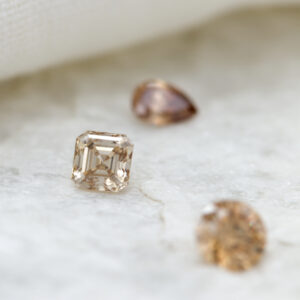Blue is the theme of this month’s birthstones and those born in December are lucky enough to choose from three different gemstones – turquoise, tanzanite or zircon.
urquoise
Known for its distinct colour and veins, turquoise has a long and rich history. Pharaohs of ancient Egypt would adorn themselves with it, Chinese artisans carved it over 3,000 years ago, Persians decorated extensively with it, and Native American Shamans would use it in sacred ceremonies to commune with spirits of the sky. Turquoise was most notably used in jewellery, but was also used to decorate daggers, horses’ bridles and turbans of ancient Persians as it was believed to guarantee protection. Apache Indians believed attaching it to bows would improve a hunter’s accuracy and Aztecs used it on ceremonial masks, knives and shields. Even now, it is considered a national treasure in Tibet, where it is believed to grant health, good fortune and protection from evil.
Turquoise is found in very dry regions where rainwater dissolves copper in the soil, forming deposits when it combines with aluminium and phosphorus. The blue tones are due to the copper, while iron and chrome add a hint of green. The US (specifically Nevada, New Mexico, California and Colorado) and China (the Hubei Province) are the largest producers of turquoise today.

Turquoise is often treated to improve its durability (as it has a Mohs hardness of 5 to 6), appearance and polish. High heat can cause discolouration and breakage, and it can also be damaged or discoloured by acids, cosmetics or even skin oils or perspiration. It’s safe to clean with warm, soapy water.
Tanzanite
As the name indicates, Tanzanite can only be found in one location worldwide – Tanzania. It is only a very recent discovery. Blue stones emerging from Tanzania were identified as the mineral zoisite in the early 1960’s but it was only in 1967 that the main source of the stones was found, in a few square miles just south of Mount Kilimanjaro.

Trace amounts of vanadium, mixed with extreme heat cause the deep blue-purple tones. Tanzanite also has natural brown tones but most of the stones on the market now are heat treated to minimize this undesirable colour and enhance the blue. The cut can also highlight the blue and purple hues and de-emphasize the brown.
Recognising the potential for tanzanite to rival the more expensive sapphire, Tiffany & Co agreed to become the main distributor and launched a major advertising campaign in 1968. It has since surged in popularity and with such a limited supply, it is becoming highly prized.

Tanzanite ranks a 6 to 7 on the Mohs scale of hardness, so is more suited to wear on occasions rather than every day. It is resistant to normal heat, light, and common chemicals, however may crack if exposed to high or sudden temperature changes and can scratch easily so care should be taken when cleaning.
Zircon
The origin of the name zircon is debated. Some believe it to be from the Arabic word “zarkun” meaning “vermillion”, others believe it be derived from the Persian word “zargun” or “gold coloured”. As zircon comes in a range of colours from red, orange, yellow through to green, blue or brown, both origins are possible. Zircon is often confused with cubic zirconia however, whilst CZ is a popular man-made diamond simulant, zircon is a naturally occurring mineral.
Zircon is one of the oldest minerals on earth, dating back millions, if not billions of years. It’s found in the earth’s crust and is most common in sand and sedimentary deposits. During the Middle Ages, zircon was thought to promote deep sleep and ward off evil spirits, while bringing prosperity and wisdom. Blue zircon in particular was popular during Victorian times and was often used in English estate jewellery from the 1880s. Cloudy or smokey zircon was popular in mourning jewellery.
Australia is the largest producer of zircon, providing around 37% of the world’s supply. Harts Range, near Alice Springs is known for producing yellow brown, orangy brown, pink and purple zircon. Zircon can also be found in Sri Lanka, Myanmar, Vietnam and Cambodia and often near sapphire sources.
Zircon commonly occurs as brownish red, however most are heat treated to blue, golds or colourless. Colourless zircon is considered to be one of the best-looking natural substitutes for a diamond, thanks to its brilliance and fire however it is more brittle and the faceted edges can chip. It ranges from 6 to 7.5 on the Mohs scale. It is generally stable when exposed to light, however some heat treated stones may revert to their original colours after prolonged exposure.
With our wide network of suppliers, we can source zircon, tanzanite and turquoise in a range of colours. If one of these takes your fancy, get in touch with us today to get started.





